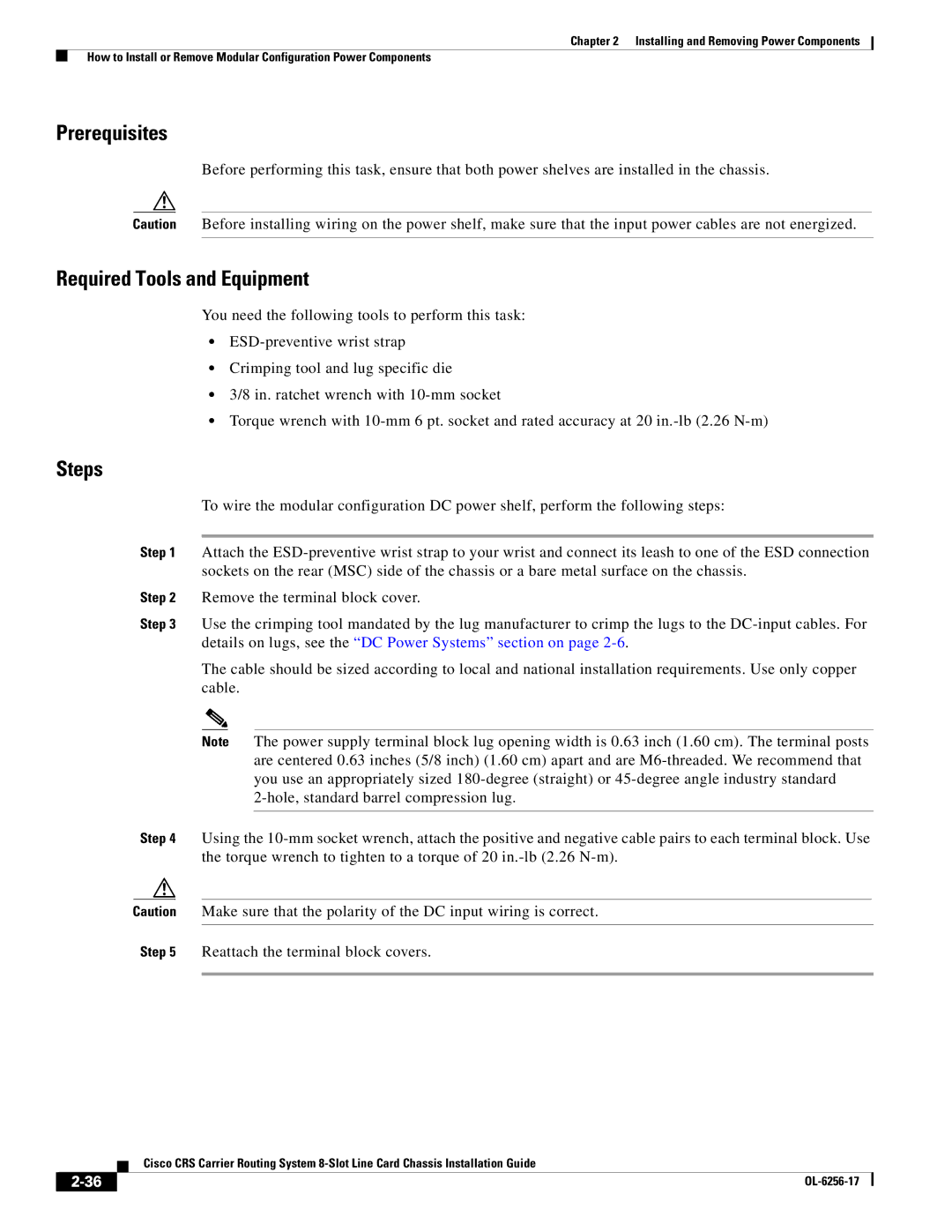
Chapter 2 Installing and Removing Power Components
How to Install or Remove Modular Configuration Power Components
Prerequisites
Before performing this task, ensure that both power shelves are installed in the chassis.
Caution Before installing wiring on the power shelf, make sure that the input power cables are not energized.
Required Tools and Equipment
You need the following tools to perform this task:
•
•Crimping tool and lug specific die
•3/8 in. ratchet wrench with
•Torque wrench with
Steps
To wire the modular configuration DC power shelf, perform the following steps:
Step 1 Attach the
Step 2 Remove the terminal block cover.
Step 3 Use the crimping tool mandated by the lug manufacturer to crimp the lugs to the
The cable should be sized according to local and national installation requirements. Use only copper cable.
Note The power supply terminal block lug opening width is 0.63 inch (1.60 cm). The terminal posts are centered 0.63 inches (5/8 inch) (1.60 cm) apart and are
Step 4 Using the
Caution Make sure that the polarity of the DC input wiring is correct.
Step 5 Reattach the terminal block covers.
Cisco CRS Carrier Routing System
|
| |
|
